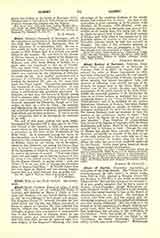

Albert of Aachen (ALBERTUS AQUENSIS), a chronicler of the First Crusade. His “Chronicon Hirerosolymitanum de bello sacro”, in twelve books, from 1095 to 1121, printed in Bongars (Gesta Dei per Francos, I, 184-381), is also found in the fourth volume of the “Recueil des historiens des croisades”. It is now usually accepted that he was a canon of Aachen (Aix-la-Chapelle), though Wattenbach asserts (Deutsch. Gesch. II, 179) that it is yet doubtful whether the earlier locating of him at the church of Aix-en-Provence be not correct. Has narrative is written with little order and less critical skill, his chronology is inexact, and his topographical references are often greatly disfigured. But the work is to be looked on as the outpouring of a deeply religious and poetic heart, which saw in the contemporary Christian knighthood the salvation of the civilization of Christendom. From this point of view, says Dr. Pastor, “the severe criticism of von Sybel, in his ‘Geschichte des ersten Kreuzzugs’ (Dusseldorf, 1841), 72-108, loses much of its point.” Wattenbach says that he may have occasionally used good historical material; in general he is the panegyrist of an ideal Christian military service, a brilliant painter of scenes and events; his work and others like it served as bugle calls to summon to the Orient new multitudes of devoted soldiers of Christ.
THOMAS J. SHAHAN

